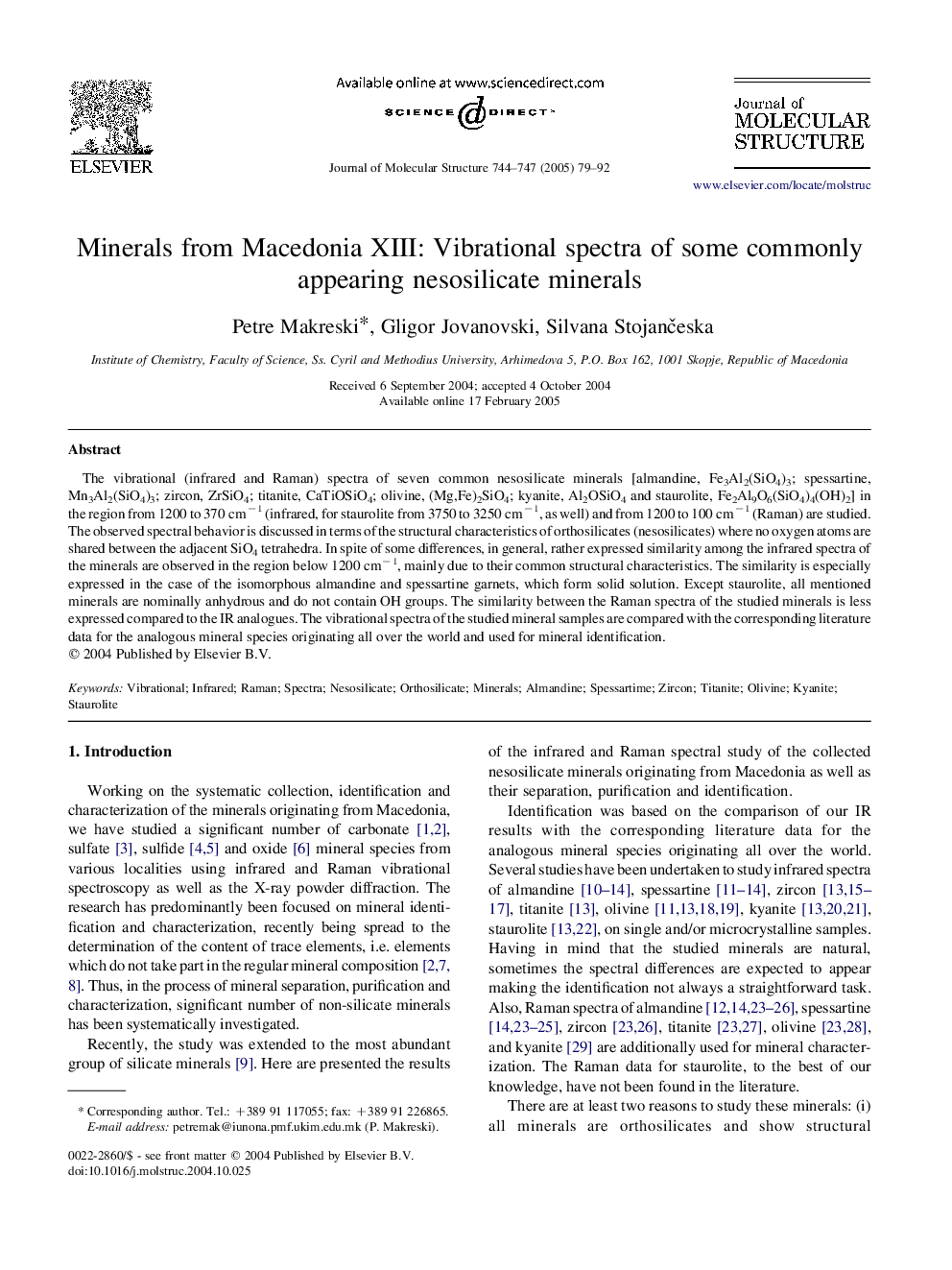| Article ID | Journal | Published Year | Pages | File Type |
|---|---|---|---|---|
| 9770042 | Journal of Molecular Structure | 2005 | 14 Pages |
Abstract
The vibrational (infrared and Raman) spectra of seven common nesosilicate minerals [almandine, Fe3Al2(SiO4)3; spessartine, Mn3Al2(SiO4)3; zircon, ZrSiO4; titanite, CaTiOSiO4; olivine, (Mg,Fe)2SiO4; kyanite, Al2OSiO4 and staurolite, Fe2Al9O6(SiO4)4(OH)2] in the region from 1200 to 370Â cmâ1 (infrared, for staurolite from 3750 to 3250Â cmâ1, as well) and from 1200 to 100Â cmâ1 (Raman) are studied. The observed spectral behavior is discussed in terms of the structural characteristics of orthosilicates (nesosilicates) where no oxygen atoms are shared between the adjacent SiO4 tetrahedra. In spite of some differences, in general, rather expressed similarity among the infrared spectra of the minerals are observed in the region below 1200Â cmâ1, mainly due to their common structural characteristics. The similarity is especially expressed in the case of the isomorphous almandine and spessartine garnets, which form solid solution. Except staurolite, all mentioned minerals are nominally anhydrous and do not contain OH groups. The similarity between the Raman spectra of the studied minerals is less expressed compared to the IR analogues. The vibrational spectra of the studied mineral samples are compared with the corresponding literature data for the analogous mineral species originating all over the world and used for mineral identification.
Keywords
Related Topics
Physical Sciences and Engineering
Chemistry
Organic Chemistry
Authors
Petre Makreski, Gligor Jovanovski, Silvana StojanÄeska,
